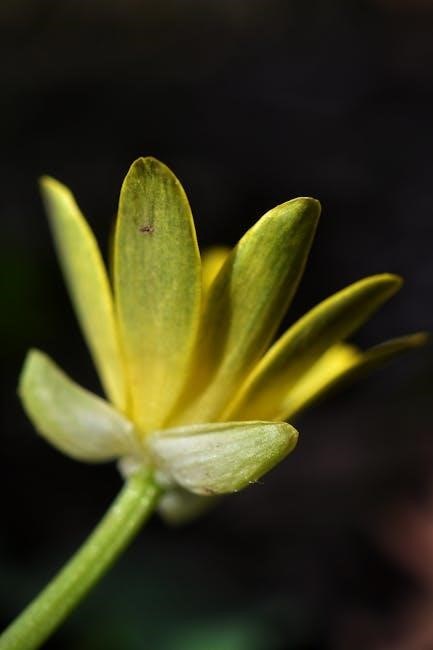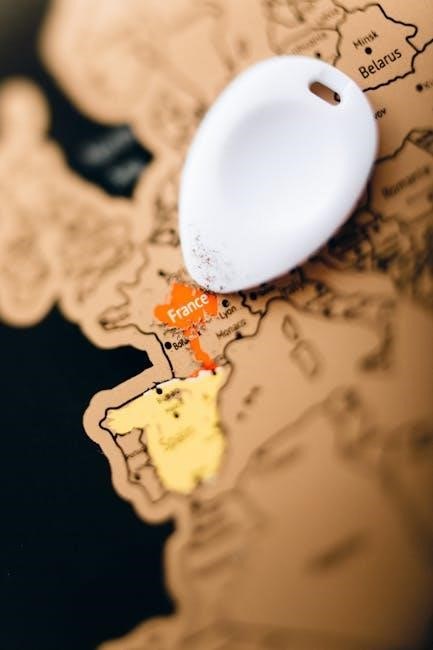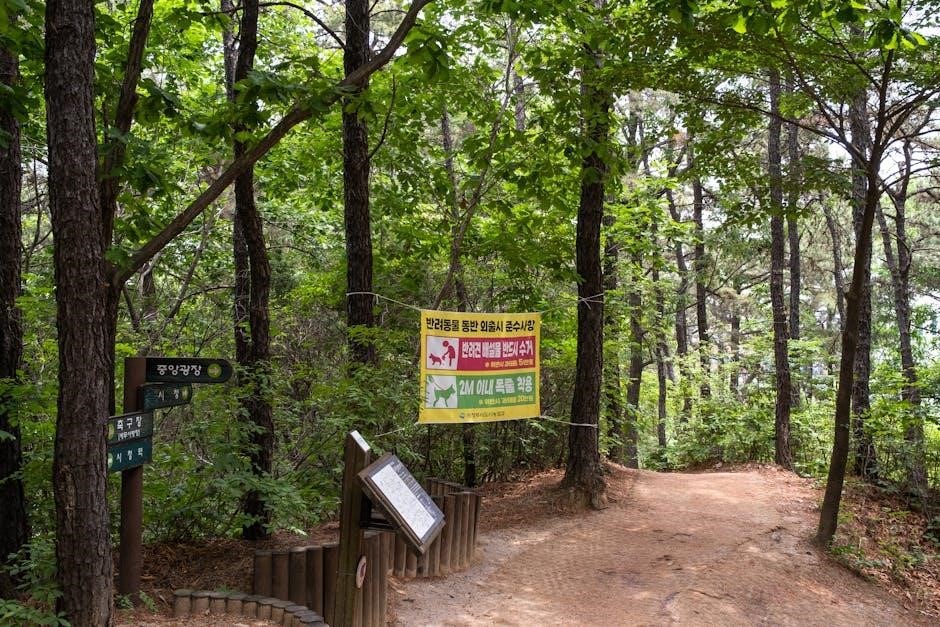Zone 8a, part of the USDA Hardiness Zones, offers a moderate climate with warm winters and hot summers. This guide helps gardeners in Zone 8a choose the right plants and planting times for success.
Overview of USDA Hardiness Zones
The USDA Hardiness Zones are a guide to help gardeners understand which plants can thrive in specific regions based on average annual extreme minimum temperatures. The zones are divided into 13 categories, ranging from Zone 1 (arctic conditions) to Zone 13 (tropical climates). Each zone is further subdivided into A and B, with Zone A being cooler than Zone B. This system allows gardeners to select plants that are suited to their local climate conditions, ensuring better growth and survival. Zone 8a, for example, has a moderate climate with warm winters and hot summers, making it ideal for a wide variety of plants. By understanding your USDA Hardiness Zone, you can make informed decisions about planting times, plant selection, and care practices. This guide focuses specifically on Zone 8a, providing tailored advice for gardeners in this region.
Importance of Understanding Your Planting Zone
Understanding your planting zone is crucial for successful gardening, as it determines which plants can survive and thrive in your area. The USDA Hardiness Zones provide a framework to guide plant selection based on average temperature extremes. Knowing your zone helps you avoid planting species that may not tolerate local weather conditions, reducing the risk of plant failure. It also ensures you plant at the right time, maximizing growth potential. For Zone 8a, this knowledge is key to making informed decisions about planting times, soil preparation, and care practices. By aligning your gardening efforts with your zone’s characteristics, you can enjoy healthier plants, higher yields, and a more rewarding gardening experience. This guide is tailored to Zone 8a, offering specific advice to help gardeners make the most of their climate and growing season.
Key Characteristics of Zone 8a Climate
Zone 8a is characterized by a moderate climate with warm winters and hot summers. The average annual extreme minimum temperature ranges from 10°F to 15°F (-12°C to -9°C), making it suitable for a wide variety of plants. The growing season is long, typically lasting from April to December, with approximately 240 days suitable for plant growth. This extended season allows gardeners to grow multiple crops, including warm-season vegetables and fruits. The climate is ideal for plants that thrive in mild winters and can tolerate hot summers. However, the region’s warm winters may not provide enough chill hours for certain fruit trees, which require colder conditions to bloom properly. Understanding these characteristics is essential for selecting plants that will flourish in Zone 8a’s unique conditions. Gardeners can leverage the long growing season to maximize yields and enjoy a diverse range of plants throughout the year.
Best Plants for Zone 8a
Zone 8a supports a wide variety of plants, including vegetables, fruits, and flowering species. The mild winters and long growing season make it ideal for diverse gardening, ensuring robust plant growth and productivity.
Vegetables Suitable for Zone 8a
Zone 8a’s long growing season and mild winters make it ideal for cultivating a wide variety of vegetables. Leafy greens like spinach, kale, and lettuce thrive in cooler months, while tomatoes, peppers, and eggplant excel in the warm summers. Root vegetables such as carrots, beets, and radishes grow well in Zone 8a’s soil. Cucumbers, zucchini, and squash are also excellent choices for summer gardens. Plant cool-season crops like broccoli and cauliflower in early spring or late summer for a fall harvest. Warm-season crops like okra and black-eyed peas should be planted after the last frost date. With proper planning, gardeners in Zone 8a can enjoy multiple harvests throughout the year, leveraging the region’s favorable climate for continuous vegetable production.
Fruits and Berries That Thrive in Zone 8a
Zone 8a’s warm climate and long growing season make it an ideal location for growing a variety of delicious fruits and berries. Strawberries, blueberries, raspberries, and blackberries are excellent choices, as they thrive in the region’s mild winters and hot summers. Grapes, both table and wine varieties, also grow well in Zone 8a, benefiting from the ample sunlight and warm temperatures. Figs, a popular choice for home gardeners, are perfectly suited to the zone’s climate, producing two crops annually. Peaches, nectarines, and apricots are also great options, as they tolerate the heat and have a long enough growing season to ripen. Pomegranates and citrus trees, such as oranges and lemons, are additional excellent choices for Zone 8a gardens. With proper care, including regular watering and protection from extreme heat, these fruits and berries will flourish, providing fresh produce for years to come.
Flowering Plants for Zone 8a Gardens
Zone 8a’s long growing season and warm climate create an ideal environment for a wide variety of flowering plants. Annuals like marigolds, zinnias, and sunflowers thrive in the region’s hot summers, adding vibrant colors to gardens. Perennials such as coneflowers, black-eyed Susans, and lavender are also well-suited to Zone 8a, as they are drought-tolerant and return year after year. Roses, particularly heat-tolerant varieties, grow exceptionally well in this zone, producing stunning blooms throughout the season. For spring color, bulbs like daffodils and tulips are excellent choices, naturalizing easily in the area’s mild winters. Additionally, flowering shrubs like azaleas and hydrangeas add beauty and structure to landscapes. With proper planting times and care, these flowering plants will provide a stunning display of color and life to Zone 8a gardens. Planting in well-draining soil and ensuring adequate sunlight will help these plants flourish, creating a vibrant and thriving garden.
Herbs That Grow Well in Zone 8a
Zone 8a’s warm climate and long growing season make it an ideal place for growing a variety of herbs. Popular choices include basil, rosemary, thyme, and oregano, which thrive in the region’s hot summers. Mint and cilantro also grow well, though they may require partial shade to prevent scorching. Annual herbs like parsley and dill can be planted in early spring or late summer for a fall harvest. Perennial herbs such as rosemary and sage are well-suited to Zone 8a’s mild winters and can be planted once and enjoyed for years. Lemongrass, a tropical herb, can also be grown in Zone 8a as an annual or in containers that can be moved indoors during winter. Proper drainage and full sun are key for most herbs, though some may benefit from afternoon shade. Planting herbs in well-draining soil and providing consistent moisture will ensure a bountiful harvest throughout the growing season.

Zone 8a Planting Calendar

Zone 8a’s growing season typically runs from April to December, offering ample time for spring, summer, and fall planting. This allows gardeners to grow a wide variety of vegetables, fruits, and flowering plants successfully.
Spring Planting Guide
Zone 8a’s spring planting season begins after the last frost date, typically around late March. This period is ideal for planting cool-season crops like broccoli, spinach, and kale, which thrive in cooler temperatures. As the weather warms, transition to warm-season crops such as tomatoes, peppers, and eggplants. Early spring is also a great time to plant fruit trees and berry bushes, ensuring they establish strong root systems before summer heat. Gardeners should prepare soil by loosening it to a depth of 8-10 inches and incorporating compost for nutrient-rich ground. Additionally, March is the perfect month to start seeds indoors for plants like zinnias and marigolds, which can be transplanted outside later. By following this guide, gardeners in Zone 8a can maximize their spring planting success and enjoy a bountiful harvest.
Summer Planting Recommendations
Zone 8a’s summer is characterized by hot temperatures, making it ideal for planting heat-tolerant crops. Vegetables like tomatoes, peppers, and eggplants thrive in the warm weather, while fruits such as watermelon, cantaloupe, and black-eyed peas also perform well. Plant these in late spring to early summer for optimal growth. Herbs like basil and rosemary can be planted in well-draining soil to enhance summer dishes. For flowering plants, zinnias, marigolds, and sunflowers are excellent choices, adding vibrant colors to gardens. Ensure soil is prepared with organic matter to retain moisture and nutrients. Water deeply but avoid overwatering to prevent root rot. Mulching around plants helps retain soil moisture and suppress weeds. By selecting the right varieties and following proper care, gardeners in Zone 8a can enjoy a productive and colorful summer garden.
Fall Planting Tips
Fall is an excellent time to plant in Zone 8a, as the cooler temperatures allow for a second harvest of many crops. Leafy greens like spinach, kale, and lettuce thrive in the fall, as do broccoli, cauliflower, and Brussels sprouts. Root vegetables such as carrots, beets, and radishes also perform well. Plant these crops 8 to 10 weeks before the first frost date to ensure they mature. Herbs like cilantro and parsley can be planted in early fall for a fresh harvest. Soil preparation is key; add compost or well-rotted manure to improve soil fertility. Ensure proper spacing and water plants regularly, but avoid overwatering. Stagger planting dates to extend the harvest season. Additionally, consider using row covers to protect plants from early frosts. Fall gardening in Zone 8a can be rewarding, offering a variety of delicious and nutritious crops to enjoy during the cooler months.
Winter Planting Options

Zone 8a’s mild winters make it possible to grow a variety of plants during the colder months. Cool-season crops like spinach, kale, and Brussels sprouts thrive in winter, as they tolerate light frosts. Root vegetables such as radishes and carrots can also be planted in late fall or early winter for a winter harvest. Herbs like parsley and cilantro can be grown in protected areas. For flowering plants, pansies and violas are excellent choices, adding color to winter gardens. To protect plants from extreme cold, use techniques like mulching, cold frames, or row covers. Plant bulbs like daffodils and tulips in late winter for a spring bloom. Winter is also a good time to plant bare-root trees and shrubs. Ensure soil is well-prepared and water plants regularly, but avoid overwatering. With proper care, Zone 8a gardeners can enjoy a productive and beautiful winter garden.

Soil Preparation and Garden Maintenance
Proper soil preparation and maintenance are crucial for a thriving Zone 8a garden. Test soil pH, amend with compost, and mulch to retain moisture and suppress weeds, ensuring optimal growing conditions.
Understanding Soil Types in Zone 8a
Zone 8a gardens typically feature diverse soil types, including clay, loam, and sandy soils. Clay soils retain moisture but drain poorly, while sandy soils drain quickly but lack nutrient retention. Loam, a balanced mix of clay, silt, and sand, is ideal for most plants. Testing soil pH and nutrient levels is essential to determine necessary amendments. Composting organic matter can improve soil structure and fertility. Mulching helps retain moisture and suppress weeds, especially in sandy soils. Understanding your soil type allows for tailored strategies to optimize plant growth and health in Zone 8a’s climate.
Best Practices for Soil Testing
Soil testing is a crucial step in optimizing plant growth in Zone 8a. Start by collecting soil samples from multiple areas of your garden to ensure accurate results. Use a reliable soil testing kit or send samples to a local agricultural extension office for professional analysis. Test for pH levels, nutrient content, and organic matter. Zone 8a soils often benefit from slight adjustments to pH, as most plants thrive in a range of 6.0 to 7.0. Interpret test results to identify deficiencies and determine the need for fertilizers or amendments. Regular testing, ideally annually, helps monitor soil health and guide adjustments. Avoid testing soil immediately after fertilizing or amending, as this can provide inaccurate readings. By understanding your soil’s composition, you can create a more fertile and supportive environment for your plants to flourish in Zone 8a’s climate.

Composting and Fertilizing in Zone 8a
Composting and fertilizing are essential practices for maintaining healthy soil and promoting robust plant growth in Zone 8a. Start by creating a compost pile using kitchen scraps, leaves, and grass clippings, avoiding meat and dairy to prevent pests. Add this nutrient-rich compost to your soil before planting and throughout the growing season to improve soil structure and fertility. For fertilizing, use a balanced fertilizer (e.g., 10-10-10) in early spring and again in late summer to support plant growth. Organic options like well-rotted manure or fish emulsion are also effective. Avoid over-fertilizing, as this can harm plants and the environment. Test your soil regularly to determine the best fertilizer application. In Zone 8a’s warm climate, plants benefit from consistent nutrient replenishment to thrive during the long growing season. By combining composting and strategic fertilizing, you can create a thriving garden tailored to Zone 8a’s conditions.
Mulching Techniques for Zone 8a Gardens
Mulching is a beneficial practice for Zone 8a gardens, helping retain moisture, suppress weeds, and regulate soil temperature. Organic mulches like wood chips, bark, or leaves are ideal, as they improve soil health as they decompose. Apply a 2- to 3-inch layer around plants, keeping it a few inches away from stems to prevent rot. In Zone 8a’s warm climate, mulch helps cool the soil and reduce water evaporation. Replenish mulch annually, especially in spring, to maintain its effectiveness. Inorganic options like plastic sheeting or gravel can also be used, particularly for paths and areas where weed control is a priority. Avoid over-mulching, as it can suffocate plants and lead to root issues. Mulching is a simple yet effective way to support healthy plant growth and reduce garden maintenance in Zone 8a’s challenging weather conditions.
Pest Control and Common Challenges
Zone 8a gardens face challenges like pests, diseases, and extreme weather. Regular monitoring, organic pest control, and chemical options are essential to protect plants and ensure a healthy harvest.

Common Pests in Zone 8a Gardens
Gardens in Zone 8a often face challenges from pests that thrive in its warm climate. Common pests include aphids, whiteflies, spider mites, and caterpillars, which can damage leaves and flowers. Slugs and snails are also prevalent, targeting tender plants at night. Root-knot nematodes, microscopic worms, can harm plant roots, stunting growth. These pests can quickly spread if left unchecked, so regular monitoring is essential. Understanding their life cycles and habitats helps in implementing effective control measures. For example, aphids and whiteflies can be managed with natural predators or insecticidal soap, while slugs and snails respond well to traps and barriers. Keeping the garden clean and promoting beneficial insects can also reduce pest pressure. Addressing these issues early ensures a healthier and more productive garden in Zone 8a.
Organic Pest Control Methods
Organic pest control methods are essential for maintaining a healthy and sustainable garden in Zone 8a. These methods focus on natural solutions to manage pests without harming the environment or beneficial organisms. One effective approach is the use of neem oil, a natural pesticide derived from the seeds of the neem tree, which disrupts pest life cycles. Insecticidal soap is another option, targeting soft-bodied pests like aphids and whiteflies. Introducing beneficial insects, such as ladybugs and lacewings, can also help control pest populations naturally. Companion planting, where certain plants deter pests, is a proactive strategy. For example, garlic repels aphids, while marigolds discourage nematodes. Diatomaceous earth, a powdery substance made from fossilized algae, dehydrates and kills insects with exoskeletons. Additionally, crop rotation and maintaining garden cleanliness can prevent pest buildup. Regular monitoring and early intervention are key to ensuring these methods are effective in protecting your Zone 8a garden.
Chemical Pest Control Options
Chemical pest control options can be effective for managing severe infestations in Zone 8a gardens. These methods often provide quick results but should be used judiciously to avoid harming beneficial insects and the environment. Common chemical pesticides include pyrethrin sprays, which target aphids, mites, and beetles, and permethrin, a synthetic version of pyrethrin, offering longer-lasting protection. Systemic insecticides like imidacloprid can be applied to the soil or plants to control pests such as whiteflies and aphids. However, these can impact pollinators, so use them cautiously. Fungicides, such as those containing chlorothalonil or copper, are essential for preventing and treating fungal diseases in plants. Herbicides can also be used to control weeds that compete with your plants for nutrients. Always follow the product label instructions to ensure safety and effectiveness. While chemical controls can be necessary, integrating them with organic methods promotes a balanced and sustainable gardening approach in Zone 8a.
Addressing Common Plant Diseases
Zone 8a gardens often face challenges from common plant diseases, particularly those thriving in warm, humid conditions. Fungal infections, such as powdery mildew and root rot, are prevalent due to the region’s hot summers and occasional heavy rainfall. These diseases can weaken plants and reduce yields if left untreated. Bacterial leaf spot and blight are also common, especially in vegetables like tomatoes and peppers. To manage these issues, gardeners should practice good hygiene, such as removing infected plant parts and improving air circulation. Crop rotation is another effective strategy to break disease cycles. Organic treatments like copper-based fungicides and neem oil can help control outbreaks. Chemical fungicides are available but should be used sparingly to avoid harming beneficial insects. Regular soil testing and balanced fertilization can strengthen plant immunity. By adopting proactive measures and monitoring plants closely, gardeners in Zone 8a can mitigate disease risks and maintain healthy, thriving plants throughout the growing season.

Conclusion and Additional Resources

Zone 8a offers a versatile climate for gardening. By following this guide, gardeners can thrive. Explore additional resources like USDA maps, planting charts, and local gardening groups for continued success and inspiration.
Final Tips for Successful Gardening in Zone 8a
For a thriving garden in Zone 8a, prioritize soil health by testing and amending regularly. Choose plants suited to the region’s warm climate and long growing season. Water deeply but avoid overwatering, especially during hot summers. Mulch to retain moisture and suppress weeds. Monitor for pests like aphids and whiteflies, using organic or chemical controls as needed. Plant cool-season crops in early spring or late summer for a fall harvest. Take advantage of Zone 8a’s extended growing season by succession planting. Keep a gardening journal to track progress and plan improvements. Stay informed about local weather patterns and frost dates to protect tender plants. Finally, experiment with new varieties to diversify your garden and enjoy the rewards of Zone 8a’s fertile ground.
Recommended Tools and Resources

For successful gardening in Zone 8a, invest in essential tools like gloves, trowels, and irrigation systems. A soil test kit is crucial for understanding your soil’s pH and nutrient levels. Digital resources such as the USDA Hardiness Zone Map and Zone 8a-specific planting charts provide valuable insights. Gardening apps like Garden Plan Pro or Seedling can help track planting schedules and offer real-time advice. Books like The New Seed Starter’s Handbook and The Vegetable Gardener’s Bible are excellent references. Local nurseries and gardening clubs are great for personalized advice and region-specific tips. Online forums and communities, such as GardenWeb or Reddit’s gardening groups, offer peer support and shared knowledge. Lastly, consider investing in a journal to record your progress, note weather patterns, and plan future gardens. These tools and resources will empower you to make informed decisions and maximize your gardening success in Zone 8a.



